Table of contents
Ground cloves are the buds of the clove tree ( Syzygium aromaticum ). They release their unique aroma more quickly than whole cloves .
Use in the kitchen
Clove powder consists of the dried and ground buds of the clove tree. Cloves have a more complex taste: a combination of sweet, bitter and a gentle spiciness. The taste is comparable to allspice ( Pimenta dioica ), also a member of the myrtle family. Because of its peppery spiciness, allspice is also called clove pepper. It also has a cinnamon and nutmeg aroma.
Ground cloves are used in Christmas biscuits and to flavor desserts such as apple sauce, jam and compote. In this combination they harmonize with cinnamon, nutmeg, star anise and lemon. The fine powder is also a component of spice mixtures such as curry powder, garam masala, quatre-épices, Chinese five-spice or the African, hot spice mixture Berbere. Cloves also give stocks, soups, sauces and marinades a special flavor in small doses.
Can you grind whole cloves yourself? Fresh clove powder is easy to make: the easiest way is with a spice grinder, coffee grinder or mortar. Check beforehand that the grinder is clean and dry. Only grind as many cloves as you need in a short time, as ground spices lose their aroma more quickly than whole cloves.
How much clove powder is equal to one clove? The amount of clove powder that is equal to one whole clove can vary depending on the size of the clove and how finely it is ground. As a rough guide, about 1⁄4 teaspoon of ground clove powder is equal to one whole clove.
Vegan recipe for spiced pancakes
Ingredients (for 3 people): 100 g coconut flour (alternative to white flour), 125 g wholemeal flour, 2 tsp cream of tartar baking powder, 1/2 tsp baking soda, 1/4 tsp ground cinnamon, 1/8 tsp ground nutmeg, 1 pinch ground cloves, 1 tsp grated orange peel ; 350 ml orange juice, 50 g raisins, oil (e.g. rapeseed oil ), maple syrup .
Preparation: Mix dry ingredients such as flour, baking powder, baking soda and spices. Add orange peel, raisins and orange juice and quickly mix everything into a dough. Heat oil and use the dough to make 10 small pancakes. Serve with maple syrup and fresh fruit.
How can you make clove oil yourself?
Recipe for making clove oil
Ingredients: 50 ml cold-pressed, high-quality almond oil, 3 teaspoons ground cloves (or 10-15 whole cloves, freshly ground), 1 screw-top jar, 1 filter.
Preparation: Put all the ingredients in a screw-top jar and leave it tightly closed in a dark, cool place for about 14 days. As with a tincture, you should shake the oil well once a day. Then filter the oil and pour it into a dark brown glass bottle, preferably with a pipette.
Clove oil is always taken diluted (with cooking oil or water). If necessary, it can be applied to the desired areas of the skin using a cotton swab or used as a bath additive or in a foot bath. The numbing clove oil is often applied to painful areas of the body, but care should be taken when it comes into contact with mucous membranes due to its irritability. Clove oil can be diluted with water as a room fragrance for use in fragrance lamps. The oil is used as an insect repellent.
Vegan recipes with ground cloves can be found under the note: " Recipes that have the most of this ingredient ".
| Not only vegans or vegetarians should read this: Vegans often eat unhealthily. Avoidable nutritional errors . |
Purchasing - Storage
Clove powder is generally available all year round in almost all large supermarket chains such as Migros, Lidl, Coop, Denner, Volg, Spar, Aldi, Rewe, Edeka, Hofer, Billa etc. The quality is difficult or even impossible to control. It is also difficult to estimate how long the spice jar has been on the shelf.
Clove powder is also available in organic supermarkets such as Denn's Biomarkt and Alnatura . Most natural food stores and health food stores also sell clove powder and with a bit of luck you can get freshly ground powder there.
In contrast to clove powder, poor quality cloves are easy to recognize. They look wrinkled, appear dusty, and are often broken or without heads. The "floating test" also provides information: poor quality cloves float horizontally in water. These cloves contain hardly any essential oil. Good quality cloves can be recognized by their plump appearance - the cloves sink to the bottom in the water. 1
The best quality comes from the Moluccas, Zanzibar and Madagascar (due to the optimal climate, tradition and experience). 1 Unfortunately, the packaging rarely contains information about the origin.
The availability of clove powder varies depending on the size of the store, catchment area, etc. You can find our recorded food prices for the DA-CH countries above under the ingredient image - and by clicking you can see their development at various suppliers.
Storage tips
Ground cloves lose their aroma very quickly. It is therefore important to store the powder in a well-sealed, dry and dark place. It is best to buy good quality whole cloves and grind them in a spice mill or crush them with a mortar if necessary. Whole cloves retain their aroma for a very long time. If stored in a dry place, protected from light and heat, the aromatic buds will last for 2-5 years. After harvesting in the country of origin, storage also plays a role in determining whether the quality is right. The study shows this particularly for the cloves used to make clove oil. 30
Ingredients - Nutritional value - Calories
To be realistic, we show you the ingredients per 1 g (instead of per 100 g as usual).
Dried cloves, whole or ground, have an energy content of 2.74 kcal/1g. The carbohydrate content is 0.66 g/1g, fat is 0.13 g/1g and proteins are 0.06 g/1g. When dried, the water content is less than 10%. 3
Manganese, vitamin K and iron are the most important essential nutrients that ground cloves offer. However, because of the small amount consumed, they and the macronutrients do not contribute significantly to meeting the respective daily requirement. Far more important for the health value are the secondary plant substances in this ingredient, which can have an effect even in trace amounts. Although all herbs and spices have many health-promoting ingredients, we deliberately avoid the insubstantial buzzword "superfood" here.
The complete ingredients of clove powder, the coverage of the daily requirement and comparison values with other ingredients can be found in our nutrient tables. In the article Nutrients explained you will get a detailed insight into the topic.
Health effects
Clove tincture is often used to disinfect the mouth and throat and as a stomach stimulant. The crategolic acid contained in cloves is partly responsible for the analgesic (pain-relieving) effect. 7
In medicine, the essential oil of cloves is found in lemon balm spirit, a stomach-strengthening agent, or in other appetite-stimulating tonics. 4
The eugenol contained in clove oil has an antimicrobial effect and inhibits the growth of fungi, bacteria and viruses. A study from Portugal showed a promising effect against Candida and Aspergillus fungi. 8 Clove oil is said to be particularly successful in the treatment of vaginal yeast infections. 9 Certain acne-causing bacteria can also be treated naturally with clove oil. 10 The ingredient eugeniin is also said to have an antiviral effect against herpes. 2
Ingredients in cloves could help in diabetes by controlling certain genes in liver cells so that sugar metabolism is better regulated in a natural way. 12
In a study with chickens, researchers mixed ground cloves into the chickens' feed, which improved the animals' antioxidant status. To measure the antioxidant status, they examined the activity of antioxidant enzymes (superoxide dismutase, glutathione peroxidase), the concentration of sulfhydryl groups, malondialdehyde and vitamins in the blood. 20 The researchers therefore examined the animals' capacity to compensate for reactive oxygen compounds (peroxides and oxygen radicals). It is, so to speak, a recording of the antioxidant protection system.
Clove capsules containing ground clove buds are also available on the market. They are said to be effective against toothache, bad breath, digestive problems, intestinal parasites, and other problems. There appear to be no side effects. However, studies on their exact effectiveness and the tolerable dosage are still lacking.
How many cloves can you eat per day? To avoid side effects, daily consumption should be limited to about 1/4 teaspoon of clove powder. 21 The WHO recommends a guideline of 2.5 mg of cloves per kilogram of body weight. 15 For a body weight of 70 kg, that would be just 0.18 g of cloves. 15 If you have existing health problems or are unsure, it is advisable to consult a doctor. In contrast to clove powder, undiluted clove oil can lead to an overdose even in small quantities. A few milliliters can be life-threatening for children. 16
Secondary plant substances
Many of the health effects of cloves can be attributed to the secondary plant substances they contain. Our article on secondary plant substances provides an overview of the classification of substance groups, their occurrence in foods and possible effects on humans. Cloves contain the following secondary plant substances:
It contains 15-22% essential oil (a mixture of various secondary substances) 18. The main components are eugenol (70-95% in clove oil), eugenyl acetate (up to 17%) and β-caryophyllene (5.0-14%). Smaller amounts of humulene, benzaldehyde, benzyl acetate, γ- and α-caryophyllene, limonene, α- and β-pinene, heptan-2-one and octan-2-one (both of which play a major role in the smell) are also present. It also contains tannins-gallotannins (including the ellagitannin eugeniin) and phenolcarboxylic acids (caffeic acid derivatives), e.g. gallic and ellagic acid, caffeoyl, coumaric, caffeic and ferulic acid. There are also flavonoids, e.g. B. Astragalin, isoquercitrin and hyperoside as well as triterpenes (1% oleanolic acid, 2% crataegolic acid), chromone glycosides (biflorin, isobiflorin), chromone-C-glycosides and some phytosterols (β-sitosterol and small amounts of stigmasterol and campesterol). 1 A study from Spain classified cloves as a good antioxidant (as did oregano, rosemary, thyme and sage ). 5,15
However, it should be noted that the composition of the secondary plant substances in cloves can vary depending on the variety, time of harvest, storage, drying and growing conditions. Therefore, quantities are only of limited use and should only be understood roughly.
Dangers - Intolerances - Side effects
Cloves can cause severe irritation to the mucous membranes if overdosed. This danger exists with all spices with a high proportion of essential oil, but the intense smell usually prevents this. 4 Too much clove oil can damage tissue and trigger allergic reactions.
Cloves are considered to induce labor, which is why pregnant women should avoid too much clove powder or other clove products. If you want to induce labor, teas containing cloves are recommended to induce labor.
Use as a recognized medicinal plant
Only clove oil and the eugenol isolated from it are used medicinally. There is a positive monograph from Commission E as well as an HMPC monograph (traditional use), an ESCOP and a WHO monograph. Clove oil can be used for inflammation of the mouth and throat area and for local pain relief in dentistry. It is also used for the symptomatic treatment of chronic anal fissures. 2,22
Folk medicine - natural healing
Due to their antiseptic, slightly anaesthetic effect, cloves are known as a toothache reliever (applied externally). 13 Clove oil is particularly helpful in homemade toothpaste.
Chewing whole cloves for toothache or bad breath is a well-known home remedy.
Cloves are used internally for gastrointestinal inflammations and intestinal parasites. In China, they are used as a remedy for nausea, hiccups, so-called stomach cold and impotence. 14
The disinfectant effect of cloves was particularly promising in the Middle Ages during epidemics of plague and cholera. 4
Ecological footprint - animal welfare
A team from various research and environmental organizations calculated the CO 2 footprint of cloves as part of a cooperation project. Cloves are 50% better than the average of the foods examined and are therefore a climate-friendly food. 1 kg of cloves produce 0.26 kg CO 2 eq/kg. Converted to 1 g, far more than the amount consumed, the CO 2 footprint is negligible (0.00026 kg CO 2 eq/g). 23
CarbonCloud, a Swedish carbon footprint database, found that cloves from Sri Lanka had an emission of 1.06 kg CO 2 eq/kg. 24 Surprisingly, imports from tropical countries such as Sri Lanka have a relatively small carbon footprint. The exception is transport by plane. However, this is mainly used for foods that spoil quickly 25 – dried cloves are not included.
According to Mekonnen and Hoekstra (two important scientists in this field), the global average water footprint of cloves is an impressive 61,205 l/kg. That is an enormous amount. Of that, 59,834 l is green water. This suggests that the clove tree should only be cultivated in rainy areas. Hardly any other food requires so much water. Only vanilla (according to the cited source) has an even higher footprint at 126,505 l/kg. Of course, these figures need to be put into perspective: per gram of clove, only 61.2 l are needed. 26 A 150 g portion of beef requires an average of 2312.25 l (15,415 l/kg). 27
Despite extensive research, we were unable to find any reports on conventional or organic cultivation of cloves; however, cultivation according to organic principles (according to IFOAM : health, ecology, fairness and welfare) is generally preferable. 28 This is an important aspect, particularly in view of the strenuous and dangerous harvest. Often, the harvest workers can only rely on their courage and experience during the harvest at dizzying heights. Workers repeatedly fall and suffer serious injuries or even death. 11 Controls and certification systems are (survival) important for such workplaces.
For detailed explanations of various sustainability indicators (such as ecological footprint, CO2 footprint, water footprint), see our article: What does the ecological footprint mean?
Worldwide occurrence - cultivation
The clove tree, which belongs to the myrtle family (family: Myrtaceae), is native to the Moluccas and the Philippines. Its center of origin is the volcanic island chain of Ternate, Tidori, Mare, Moti and Makian, which lies west of New Guinea. In this region, wild clove trees can still be found in low mountain forests. In contrast to cultivated trees, the wild trees have larger and less aromatic buds and leaves; the plant contains fewer essential oils. 29 Today, the tree is cultivated in many tropical regions of the world. The tree prefers nutrient-rich, well-moistened but water-permeable soil. 2 ,22
The first description of cloves can be found in an Ayurvedic document from 1500 BC. Cloves came to Europe with the Arabs in the 4th century and 300 years later were an important part of the medicinal treasures of the time. 2
Later, the largest quantities were produced on the African islands of Pemba and Zanzibar until the beginning of the 20th century. Today, the majority (80%) comes from Indonesia. For a long time, the Dutch had a monopoly on cloves; even today, a large proportion of the cloves from the Moluccas are shipped there.
Cultivation - Harvest
Harvesting cloves is a very laborious process and must be done at the right time. When the clove buds turn from green to pink, before the flowers open, the buds must be carefully picked by hand. In some places they are gently knocked off the trees with bamboo sticks, but most often they are picked from platforms. The buds must then be dried as quickly as possible. They are usually dried on grass mats in the sun - a difficult balance between too much and too little heat. During the drying process the cloves lose a lot of water, losing up to 3/4 of their fresh weight. The drying process gives them their dark brown color. Each tree produces around 2 kg per year, with the main harvest from June to September . 29 Good, fresh cloves feel greasy and lose some oil when you press your fingernail into the stem.
Normally, the clove tree is hardly susceptible to pests. However, fungal pathogens such as Valsa eugeniae or Cryptosporella eugeniae can cause great losses. They penetrate the plant's vessels through the roots and cause the young tree to die. In 1950, Valsa eugeniae destroyed half of the plantations in Zanzibar. 17
Further information
The clove tree can reach a height of up to 10 m, sometimes even 20 m, with a trunk diameter of up to 40 cm. Even in the tropical maritime climate, the optimal location for clove trees, the plants only bear fruit in the 6th year. It is typical and special for myrtle plants that the whole tree, in all its parts, contains the aromatic-smelling essential oil. The leaves grow elliptically, 5-15 cm long and have a shiny, leathery surface that is translucently dotted. At the end of the branch, 5-20 yellowish-white flower buds grow from the leaf axils on the three-part umbels, from which whitish-pink flowers (triple, three-forked umbels) later develop. 2, 4,22
The genus Syzygium comprises between 120 and 500 species (depending on the botanical definition). 2
Less out of a risk of confusion, but rather as a substitute, one could mention the avens ( Geum urbanum ), a medicinal herb from the rose family (Rosaceae). The rootstock of the true avens smells slightly of cloves, which made it popular in the kitchen as a clove substitute. It also has a mild pain-relieving and strengthening effect. Avens is used for toothache and gastrointestinal disorders. 4
The ornamental plant 'carnation' has nothing in common with the clove except for the name. The flower was probably named after the clove because it has a similar scent.
Alternative names
The genus name Syzygium is derived from the Greek 'syzygios', which can be translated as 'paired' or 'united'; because the petals are united to form a cap. Aromaticum comes from the Greek 'aromaticos' and 'aroma', which means something like spice or fragrant herb. The German name 'Nelke' is derived from the word 'nail'; the buds are reminiscent of nails in shape (see the clove pictures above). Related names can be found in almost all Indo-European languages. 2
'Clove' is the English name for the clove; the tree is 'clove tree'. There are countless alternative names for the spice in German: Gewürzengelein, Kreidenelke (Kreidnelken), Kramernageln, Kramernegelen, Muskatnogel (Middle High German), Muskatnogelken (Middle High German), Nägel (Middle High German), Nägelin (Middle High German), Nagelkin (Middle High German), Nagelbaum (Middle High German), Nagelbom (Middle Low German), Nagelein, Nagelin, Nagellin, Nalen (Middle Low German), Necheleche (Old High German), Negelken, Neghelken, Neilikin (Middle High German), Nelchen (Middle High German), Nelchin, Nelgin (Middle High German), Nelekin (Middle High German), Nelikin (Middle High German), Neylicken (Middle High German) and Würznelken. Other names are: grot Necel, grote Negelken, Neghelken, gross Nelken, Mutternägelen, Nägeli-Gewürz and Mutternelken. The plant is also called Nägli or Nägeli.
The drug name is Caryophylli flos for cloves and Caryophylli aetheroleum for clove oil. 2
There are some obsolete Latin synonyms: Eugenia caryophyllata Thunb., Eugenia caryophyllus (Spreng.), Eugenia aromatica (L.) Baill. or Caryophyllus aromaticus L. 2
Other uses
Essential oil is extracted from the flower buds, young leaves and tree bark by distillation, and is used primarily in pharmaceuticals. 13
Clove cigarettes (kretek) are very popular in Indonesia. That is why the highest consumption of cloves is recorded there.
Cloves are also a popular ingredient in incense used in rituals, 7 as well as in herbal pillows and aromatic baths. Cloves stuck in oranges or lemons make a popular and pleasantly scented decoration for the Christmas season.
The eugenol in cloves can be part of a temporary dental filling mixed with zinc oxide. 19
Cloves contain bioactive substances that are used as ant repellent.
The essential oil of cloves has potential as an environmentally friendly pesticide. 6
Bibliography - 29 Sources (Link to the evidence)
| 1. | Schwedt G. Chemie der Arzneimittel: einfache Experimente mit Medikamenten aus der Apotheke [E-Book]. Wiley-VCH Verlag GmbH & Co. KGaA; 2018:49. |
| 2. | Bäumler S. Heilpflanzenpraxis heute – Arzneipflnzneporträts [E-Book]. 3. Auflage. Elsevier; 2021:904-912. |
| 3. | USDA United States Department of Agriculture. |
| 4. | Pahlow M. Das grosse Buch der Heilpflanzen. Gesund durch die Heilkräfte der Natur. Nikol: Hamburg. 2013. |
| 5. | Viuda‐Martos M, Ruiz Navajas Y et al. Antioxidant activity of essential oils of five spice plants widely used in a Mediterranean diet. Flavour & Fragrance J. 2010;25(1):13-19. |
| 6. | Milićević Z, Krnjajić S et al. Encapsulated clove bud essential oil: a new perspective as an eco-friendly biopesticide. Agriculture. 2022;12(3):338. |
| 7. | Rätsch C. Enzyklopädie der psychoaktiven Pflanzen. Botanik, Ethnopharmakologie und Anwendungen. AT-Verlag: Aarau. 2018. |
| 8. | Pinto E, Vale-Silva L et al. Antifungal activity of the clove essential oil from Syzygium aromaticum on Candida, Aspergillus and dermatophyte species. Journal of Medical Microbiology. 2009;58(11):1454-1462. |
| 9. | Ahmad N, Alam MK, Shehbaz A et al. Antimicrobial activity of clove oil and its potential in the treatment of vaginal candidiasis. Journal of Drug Targeting. 2005;13(10):555-561. |
| 10. | Fu Y, Chen L et al. The antibacterial activity of clove essential oil against propionibacterium acnes and its mechanism of action. Arch Dermatol. 2009;145(1):86-88. |
| 11. | Soewardi H, Sujono R. A new development of the clove harvest safety tool for farmers. J Phys: Conf Ser. 2019;1367(1):012040. |
| 12. | Prasad RC, Herzog B et al. An extract of Syzygium aromaticum represses genes encoding hepatic gluconeogenic enzymes. Journal of Ethnopharmacology. 2005;96(1-2):295-301. |
| 13. | Delaveau P, Lorrain M, Mortier F et al. Geheimnisse und Heilkräfte der Pflanzen. Das Beste: Zürich. 1978. |
| 14. | Bown D. Encyclopedia of Herbs & their uses. DK: London. 1996. |
| 15. | Cortés-Rojas DF, de Souza CRF, Oliveira WP. Clove (Syzygium aromaticum): a precious spice. Asian Pacific Journal of Tropical Biomedicine. 2014;4(2):90-96. |
| 16. | Hartnoll G, Moore D, Douek D. Near fatal ingestion of oil of cloves. Archives of Disease in Childhood. 1993;69(3):392-393. |
| 17. | Brücher H. Tropische nutzpflanzen: Ursprung, Evolution und Domestikation. Springer-Verlag; 2013. |
| 19. | European Medicines Agency. Caryophylli flos - herbal medicinal product. 2011. |
| 20. | Petrovic V, Marcincak S et al. The effect of supplementation of clove and agrimony or clove and lemon balm on growth performance, antioxidant status and selected indices of lipid profile of broiler chickens. Animal Physiology Nutrition. 2012;96(6):970-977. |
| 21. | Thomas L. 10 Essential Herbs: Everyone’s Handbook to Health [E-Book]. SCB Distributors; 2012. |
| 22. | Gewürznelken - Gewürznelkenbaum – Syzygium aromaticum (L.) merr. Et l. M. Perry - arzneipflanzen-lexikon. |
| 23. | Greenpeace Schweiz, Stadt Zürich, Planted Foods AG, Branding Cuisine, Tinkerbelle, Inge, myblueplanet, ProVeg International, Dr. Earth, FightBack und Eaternity. All You Can Eatfor climate - Poster. ayce.earth. 2022. |
| 24. | CarbonCloud. Schweden. Clove, Sri Lanka. |
| 25. | Ritchie H, Roser M. You want to reduce the carbon footprint of your food? Focus on what you eat, not whether your food is local. Our World in Data. Published online 2020. |
| 26. | Mekonnen MM, Hoekstra AY. The green, blue and grey water footprint of crops and derived crop products. Hydrol Earth Syst Sci. 2011;15(5):1577–1600. |
| 27. | Mekonnen MM, Hoekstra AY. A Global Assessment of the Water Footprint of Farm Animal Products. Ecosystems. 2012;15(3):401–415. |
| 28. | |
| 29. | Swadling P, Wagner R, Laba B. Plumes from Paradise [E-Book]. Sydney University Press; 2019. |
| 30. | Hastuti LT, Saepudin E, Cahyana AH, Rahayu DUC, Murni VW, Haib J. The influence of sun drying process and prolonged storage on composition of essential oil from clove buds (Syzygium aromaticum). In Depok, Jawa Barat, Indonesia; 2017 p. 030092. |

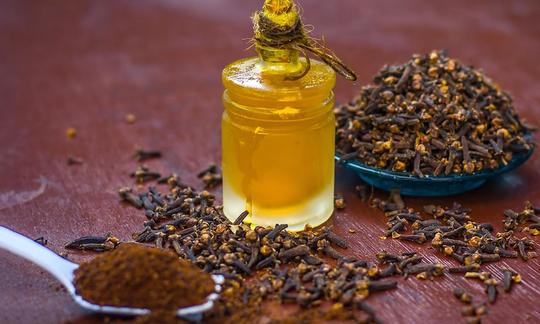

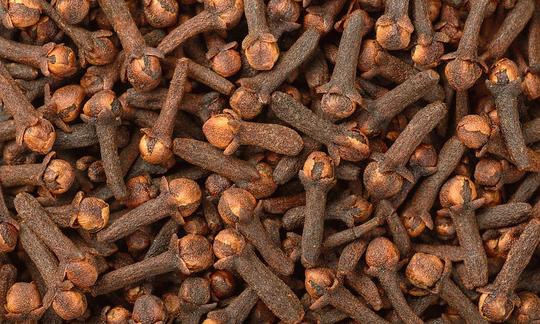

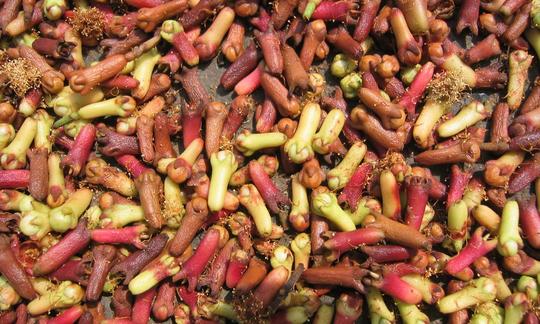

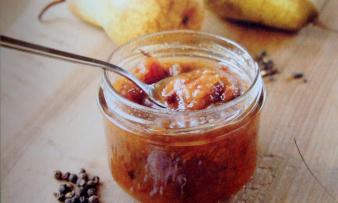

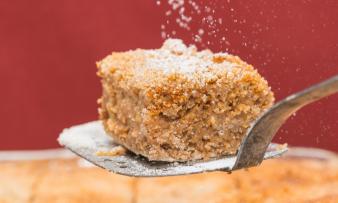





Comments